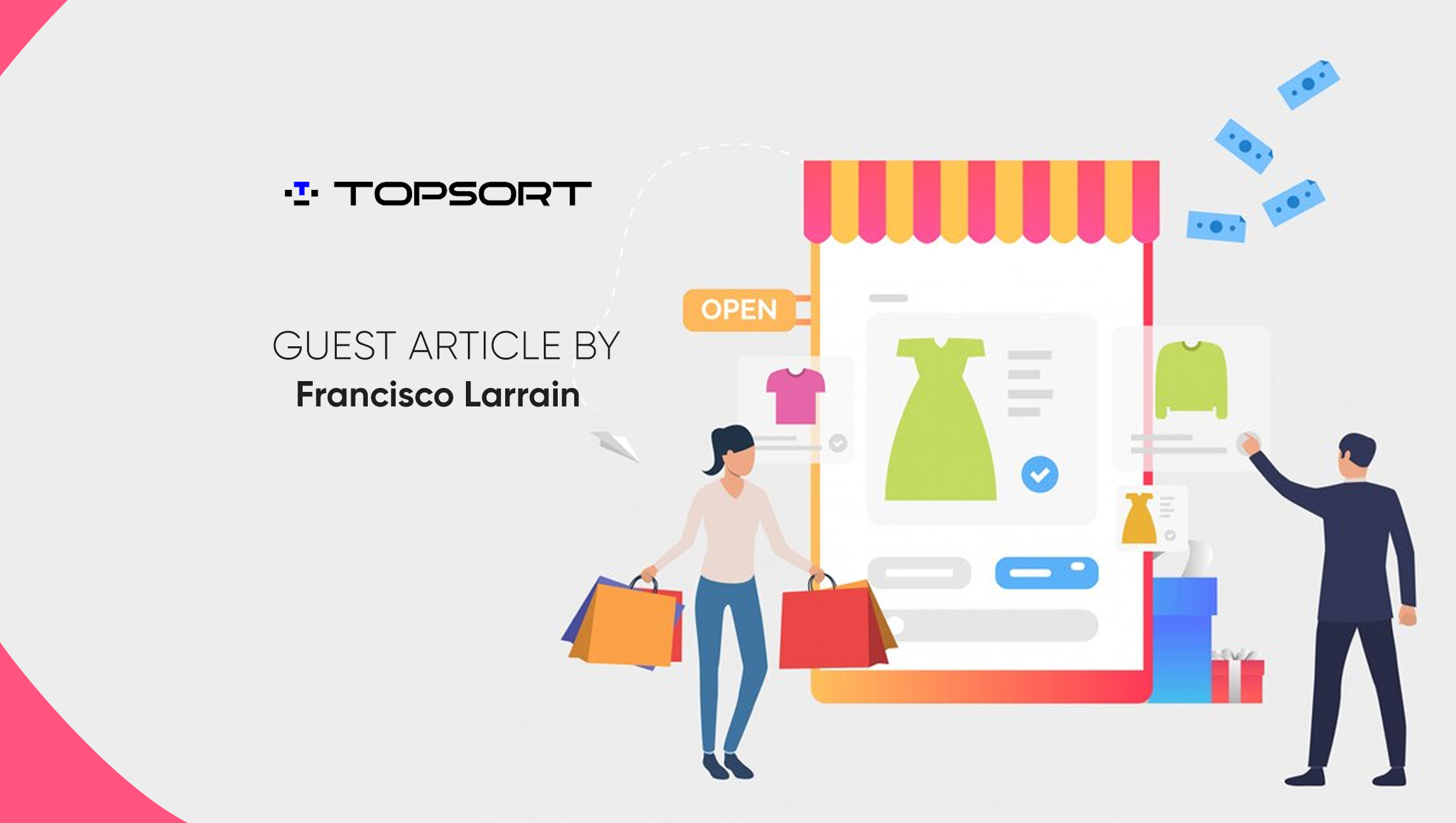Historically global advertising spend has steadily risen and will continue to rise, despite periods of fluctuations in response to economic and other conditions. From a digital publisher’s point of view, there was an expectation of their revenue mirroring global ad spend trends, with a cyclical and somewhat predictable pattern.
The history for such predicted digital advertising patterns stemmed from the shift of advertising spend from print and linear TV mediums to digital devices, in a landscape ripe for performance tracking and automation. Advertiser’s appetite to track users on digital surfaces at scale was a natural move, creating an ecosystem that took on a life of its own.
At the heart of this evolution is the collection and use of consumer data to deliver personalized advertising experiences. Advertisers were able to leverage data to determine the return of every dollar spent against their performance marketing campaigns. However, this data-driven approach has raised significant privacy concerns, leading to regulatory changes, privacy policy enforcement and shifts in consumer behavior. This article explores the critical role privacy plays in the advertising ecosystem, examining the challenges and opportunities it presents.
ROLE OF PRIVACY IN ADVERTISING
Privacy in the advertising ecosystem refers to the protection of personal and identifiable data collected from users during their interactions with digital platforms. This data can include browsing history/patterns, location, search queries and even personal identifiers such as email addresses and phone numbers.
The importance of privacy in advertising can be understood through several key aspects:
- Regulatory Compliance
- Transparency
- Consumer Trust
- Ethical Considerations
1. Regulatory Compliance
Governments worldwide have enacted stringent privacy regulations to protect consumer data. Compliance with these regulations is mandatory for businesses, where non-compliance can result in hefty fines and legal repercussions. Privacy regulation imposes varying levels of protection, determined by state, local and/or federal legislation.
2. Transparency
User data is being consumed by companies they frequently do not have direct relationships with. Data is collected behind the scenes, unknowingly by companies where previously no mechanism of informing users of data collection was mandated. Privacy initiatives are increasing the level of transparency presented to users, giving more granular control of not only who has access to data, what data they have access to and the controls of such data.
3. Consumer Trust
Trust is fundamental in any business-consumer relationship. When consumers feel their personal data is being misused or inadequately protected, trust erodes. This can lead to a decline in engagement with digital platforms and brands, ultimately impacting the effectiveness of advertising campaigns.
4. Ethical Considerations
Beyond legal requirements, there is an ethical imperative for businesses to respect consumer privacy. Ethical advertising practices build goodwill and can differentiate a brand in a crowded marketplace. Companies can go above and beyond the requirements of regulation to position themselves in an ethical high ground.
PRIVACY PROTECTIONS AND THEIR IMPACT
Privacy regulations have significantly impacted how businesses collect, store, and use consumer data. The General Data Protection Regulation (GDPR) set a precedent as the standard for user privacy in online advertising. Enacted by the European Union and effective from May 25, 2018, the GDPR introduced stringent requirements for data protection and user privacy. It mandates that companies obtain explicit consent from users before collecting, processing, or storing their personal data. The GDPR also grants users the right to access their data, request its deletion, and be informed about data breaches. Its influence has extended beyond Europe, prompting global companies to adopt stricter privacy practices and serving as a model for other privacy regulations, such as the California Consumer Privacy Act (CCPA) in the United States, Brazil’s LGPD and Canada’s PIPEDA. These regulations collectively emphasize the global shift towards enhanced consumer privacy.
Marketing Technology News: MarTech Interview With Catalina Salazar, Global Head @ Wolt Ads
Privacy Impact
With privacy regulation and big tech policy changes being introduced, companies are having to navigate a sea of change. While privacy initiatives have given more control to users about how their data is stored and shared, this control does come at a cost. Aside from the cost of adhering to regulation (legal and supportive costs), the very tools advertisers use to track and target users on publisher pages are stymied, causing limited or complete inability to track users or measure performance.
Just like the shift of dollars from print and TV to digital, privacy initiatives are causing new shifts, this time within the digital landscape. Despite some of the largest holding companies seeing a rise in global ad spend in 2023 and a projected increase in 2024 spend, noted here (Dentsu), here (IPG Magma) and here (GroupM), the impacts of privacy initiatives are determined by where you sit in the ecosystem. With these changes, new solutions are developed, companies may be forced to comply with new standards, innovate, partner with privacy solutions, adapt new business models or fade out of existence.
Advertisers are grappling with a reduction in the scale of targetable and measurable audiences. Pressure to meet campaign goals is impeded as Return On Ad Spend (ROAS) becomes a challenge through existing channels, causing a shift in Advertiser spent to more positive ROAS inventory. The appetite for more premium inventory drives CMPs up on the now scarce identifiable and measurable inventory, becoming more expensive avenues to reach a smaller audience base. Conversely, the size of less derisible, non-identifiable / non-measurable inventory becomes more abundant as Advertisers shift spend away from negative ROAS data restrictive inventory. Advertisers are testing various privacy focused solutions to increase reach on the abundant cookieless / MAID-less inventory.
Many digital publishers are facing existential threats to their business models due to the shifts of advertiser spend. The days of reliably benefiting from perennial increases in ad spend are long gone. Platforms like search engines, social media, retail media networks, and other walled garden environments are better insulated from privacy initiatives because they operate within closed ecosystems that maintain access to known users. Publishers outside these protected categories must rely on vendor support, industry initiatives, and the strategic use of data and direct sales to mitigate revenue impact. Navigating the array of options can be a daunting and complex task for both publishers and advertisers alike.
A FOCUS ON PRIVACY CENTRIC STRATEGIES
While Google remains the last holdout to support third-party cookies and Mobile Ad IDs (MAIDs) in Android devices, the advertising industry must reduce the risk of external factors from privacy initiatives to maintain business continuity. Privacy forward solutions are not only beneficial in scenarios where a 3rd party cookie or MAIDs are absent. They can apply to all environments, being able to further enrich targeting and measurement even when a 3rd party cookie or MAID is available.
The future of advertising will be a multi-modal approach, integrating with various solutions to achieve both scale and performance. Privacy-centric solutions can be largely grouped into four main categories:
- Contextual advertising
- Data solutions
- Identity solutions
- Privacy-preserving solutions
Let’s look at each of these independently.
1. Contextual Advertising
Contextual advertising involves serving ads based on the content of the web page or media rather than user data. This method analyzes keywords, topics, and the overall context of the content to display relevant ads. Since it doesn’t rely on user tracking, it’s a privacy-friendly alternative.
Advertisers can leverage contextual targeting solutions to target users based on inventory context while providing a seamless opportunity for digital publishers to garner additional yield in cookieless / MAID-less environments without any additional work. Additionally, publishers can leverage private marketplace packages that target desired contextual inventory, reducing friction for Buyers on the targeting front.
2. Data Solutions
Brands and publishers are increasingly relying on their own first-party data collected directly from users with consent. By providing consent, access to user data can be extremely rich and valuable to Advertisers. This data includes information from CRM systems, website interactions, and subscription data, allowing for personalized advertising without third-party cookies. Unfortunately access to first party data can be limited in scale or restricted to a select few publishers with authenticated users.
Third party user data allows Advertisers to extend audience reach while allowing publishers to increase their sales offerings, expanding the available audience categorization that might not be available using first-party data alone.
3. Identity Solutions
Identity solutions aim to provide a unified user identity across platforms without relying on third-party cookies. Advancement in AI can increase the scale of user identity using both deterministic and probabilistic models to link users across the internet using available signals. Another major benefit of identity solutions is the ability to wrap data solutions around the identity of linked users.
4. Privacy-preserving solutions
With the increasing emphasis on user privacy and the phasing out of third-party cookies, the digital advertising industry is exploring various privacy-preserving solutions. These solutions aim to balance effective ad targeting with stringent privacy requirements, ensuring user data protection and compliance with regulations like GDPR and CCPA. They enable the execution of essential advertising functions (like ad targeting and measurement) in a way that minimizes data sharing, including grouping users into broader, more coarse audience cohorts, elimination of smaller-sized audience segments to avoid user identification, no user-level attribution, etc.
Google’s Privacy Sandbox is a good example of a suite of tools both publishers and advertisers can leverage aimed at enhancing user privacy while reducing the ability to track individual users across the web.
CONCLUSION
The digital advertising industry is undergoing a profound transformation driven by increasing privacy concerns and stringent regulations. As third-party cookies are phased out, advertisers and marketers are pivoting towards innovative, privacy-preserving solutions.
Ultimately, the future of digital advertising hinges on building a transparent, privacy-first ecosystem that respects user rights. As the industry embraces these privacy-preserving technologies, it not only ensures compliance with global regulations but also fosters a more trustworthy and user-centric digital landscape. This evolution promises a new era where effective advertising and user privacy coexist harmoniously, benefiting both the advertising ecosystem and consumers alike.
Marketing Technology News: The Rise of the Vertical B2B Marketer: Owning Your Industry Niche in a Globalised Marketplace











